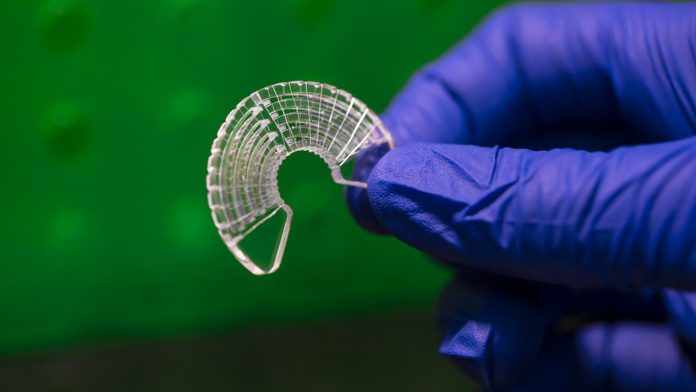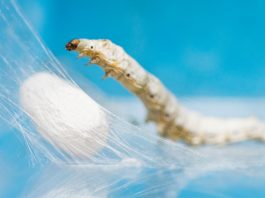Researchers at Utah State University are using silkworm silk to grow skeletal muscle cells, potentially leading to better treatments for muscle atrophy.
The researchers developed a 3D cell culture surface by growing cells on silk fibres that are wrapped around an acrylic chassis. The team used both native and transgenic silkworm silk, the latter produced by silkworms modified with spider silk genes.
Native silkworm silks have been used previously as 3D cell culture models, but this is the first time that transgenic silkworm silk has been used for skeletal muscle modelling. Elizabeth Vargis, Matthew Clegg, and Jacob Barney of the Biological Engineering Department, and Justin Jones, Thomas Harris, and Xiaoli Zhang of the Biology Department published their findings in ACS Biomaterials Science & Engineering.
Vargis said: “The overarching goal of my research is to build better in vitro models. Researchers grow cells on these 2D platforms, which aren’t super realistic, but give us a lot of information. Based on those results, they usually transition into an animal model, then they move onto clinical trials, where a vast majority of them fail. I’m trying to add to that first step by developing more realistic in vitro models of normal and diseased tissue.”
Cells grown on silkworm silk mimic human skeletal muscle more successfully than those grown on the usual plastic surface. These cells showed increased mechanical flexibility and increased expression of genes required for muscle contraction. Silkworm silk also encouraged proper muscle fibre alignment, a necessary element for robust muscle modelling.
Skeletal muscle is responsible for moving the skeleton, stabilising joints, and protecting internal organs. The deterioration of these muscles can happen for myriad reasons, and it can happen swiftly. For example, after only two weeks of immobilisation, a person can lose almost a quarter of their quadricep muscle strength. Understanding how muscles can atrophy so quickly must begin at a cellular level, with cells grown to better represent reality.









